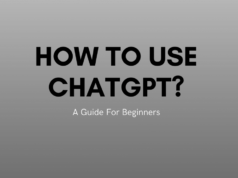Why great prompts are a 2025 superpower
The best chatgpt prompts for entrepreneurs 2025. Entrepreneurship in 2025 is fast, crowded, and deeply digital. ChatGPT can be your always-on strategist—but only if you ask the right questions. Well-crafted prompts help you generate original ideas, evaluate them quickly, and turn them into concrete actions. In short, they transform AI from a novelty into a real edge.
In this guide you’ll find the best ChatGPT prompts for entrepreneurs in 2025, grouped by business need: ideation, marketing, productivity, and team building. If you want to explore how AI compares to traditional search, check out AI Ask: How AI Tools Like ChatGPT Compare to Google Search — it’s a handy breakdown of when to use ChatGPT versus Google.
How to write high-leverage prompts
Before you dive into the prompt lists, keep these principles in mind:
- Be specific and situational. Include your industry, audience, constraints, and success metrics.
- Ask for structure. Request bullet points, tables, checklists, or step-by-step plans.
- Iterate deliberately. Follow with “make these bolder,” “prioritize for ROI,” or “pressure-test assumptions.”
- Validate externally. Treat outputs as drafts. Use your data and customer feedback to confirm.
For a deeper look at crafting better queries, the AI Chatbots section of our site has plenty of real-world examples.
Business ideation prompts
1) New business models and revenue streams
“Suggest five innovative business models for a [describe your business]. For each, list the core value proposition, target customer, pricing logic, and one example partnership that would accelerate adoption.”
2) Idea triage in minutes
“Evaluate the feasibility of launching [idea]. Provide market size indicators, audience pain points, top three competitors, and biggest risks. End with a go/no-go recommendation and the single test I should run first.”
3) Trend spotting for opportunity
“Identify three emerging trends in [industry] and explain how a startup could capitalize on each over the next 12–24 months, including potential early adopters and quick validation tactics.”
4) Disruptive angle finder
“Given the current solutions to [problem], propose three contrarian approaches that would differentiate on cost, speed, or experience. Include why incumbents haven’t done this yet.”
For more inspiration, the U.S. Chamber of Commerce shares practical small-business prompt ideas that mirror these steps.
Marketing and customer growth prompts
5) Persona clarity that actually converts
“Create a detailed persona for my [product/service]. Include jobs-to-be-done, decision triggers, objections, preferred channels, and one sentence that would make them say ‘that’s me.’”
6) Value proposition sharpening
“Rewrite our value proposition for [audience] in three versions: clarity-first, emotion-first, and proof-first. Keep each to 20 words.”
7) Conversion-ready landing page outline
“Draft a landing page wireframe for [offer]. Sections: headline, subhead, trust markers, benefits, social proof, FAQ, risk reversal, and a single CTA.”
8) 30-day content calendar in your voice
“Generate a 30-day content plan for [platforms] targeting [audience]. Mix education, authority, and conversion posts. Include hooks, primary talking points, and the action you want.”
For techniques to push beyond average outputs, Wired suggests asking for multiple variations, adding constraints, and iterating for creativity.
Productivity and workflow prompts
9) Personal productivity coach
“Design a daily schedule using Pomodoro for an entrepreneur balancing sales calls, deep work, and 2 hours of team leadership. Include two ‘protect the calendar’ rules.”
10) Decision filter when you’re stuck
“Compare [Option A] vs. [Option B] for growing [business]. Use weighted criteria: cost (25%), speed (25%), risk (25%), strategic upside (25%). Output a table and a one-paragraph recommendation.”
11) Inbox zero with tone control
“Draft a professional email to [recipient type] introducing [product/service]. Provide a concise version (75 words) and a friendly version (125 words).”
Team building and leadership prompts
12) Onboarding that ships value fast
“Create a 2-week onboarding plan for a new [role]. Day-by-day goals, resources, shadowing opportunities, and a measurable deliverable by Day 10.”
13) Culture and communication rhythms
“Suggest an internal communication cadence for a remote team of 10: async tools, meeting frequency, decision logs, and when to escalate synchronously.”
For guidance on how leaders can best use AI for decision-making, see Harvard Business Review.
Advanced 2025 prompts: get enterprise-grade leverage
14) AI consultant on call
“Act as my AI consultant. Ask 10 diagnostic questions about my goals, data, and workflows. Then propose three AI workflows that would save at least 10 hours per week, each with tools, risks, and an adoption plan.”
15) Expert panel simulation
“Simulate a panel with a marketing strategist, financial analyst, and startup operator. Each gives a one-paragraph view on the best growth move for [business], then they debate and end with one aligned plan.”
If you want a big-picture view of where conversational AI is headed, read Exploring the Next Frontier of Artificial Intelligence: ChatGPT AI 5. It’s a useful context piece for founders planning future AI adoption.
Prompt engineering tips that raise quality
- Layer context: Include audience, budget, timelines, and constraints.
- Constrain format: Ask for numbered steps, bullets, or a table.
- Dial up originality: After a first pass, say “make these 30% more unconventional,” then “now prioritize for feasibility.”
- Use role-play: Ask ChatGPT to respond as your target customer, a skeptical investor, or a domain expert.
- Reset often: Start new chats for new tasks to avoid context drift.
The Washington Post highlights that iteration, role-play, and varied perspectives can dramatically improve brainstorming outcomes with ChatGPT.
Final thoughts
The best ChatGPT prompts for entrepreneurs in 2025 are practical, specific, and iterative. Use them to generate possibilities, stress-test decisions, and move faster without losing rigor. Treat AI like a sharp collaborator: it drafts, you decide. With a small library of high-leverage prompts—and the discipline to validate in the real world—you’ll ship better ideas, sooner.









